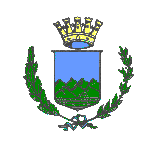
Cosenza

Panorama of Cosenza from the Pancrazio Hill
 [Qui la versione Italiana.]
[Qui la versione Italiana.]


Panorama of Cosenza from the Pancrazio Hill
The history of Cosenza started a very long time ago, 900 B.C. when a nomad people called Itali, became to live there. After the Itali people, near the 600 B.C., come the people of Brutii that are the really founders of the city. In 311 B.C. the people of Sibary (the ancient Magna Graecia) stops in Sila, because of the rich of the woods that are in the mountains near Cosenza (30km of distance to go at 2000mt). After the 270 B.C. Romans people arrived here. In 218 B.C. the people tired of Romans was allied to Annibale and go to the second punic war with him. But in 202 B.C. Romans wins at Zama and Cosenza was destroyed and rebuilded by the Roman Consul Valerius Flaccus. The Romans stay here up to the 300 A.C. In the meantime the new christian religion delete the pagan degrade of the Romans. Surrounded by seven hills, Pancrazio, Vetere, Guarassano, Venneri, Gramazio, Triglio, Mussano, Cosenza is lapped by two rivers, the Crati an the Busento. The Busento ended in Crati river at the base of the Pancrazio Hill, were the legend remember that was buried King Alarico of Visigoti with his horse and his tresaure (409 A.C.) (every time comes more scientist people to search the thesaure whithout any results).
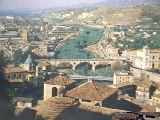
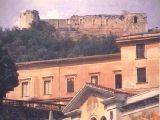
The culture have big roots here. This is the land of the famous Bernardino Telesio, philosopher-scientist, father of rivolutionary astronomics theories. Tommaso Campanella, famous philosopher, remembered for the utopic opera of the "City of the Sun". Here born the mytic Academia founded by Aulo Giano Parrasio with scientist like the mentioned Telesio, the literate Francesco Saverio Salfi and the humanist Sertorio Quattromani. Today the develop of the old Academia is the university located at 5km near Cosenza in the Rende district, one of the most important city of the province of Cosenza. The pride of culture by the people of Cosenza is expressed through the many people that still like to go to the Theatre.
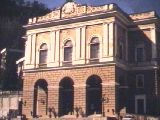
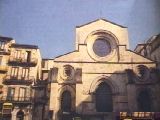
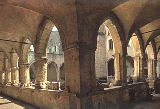 Cloister of S.Francesco d'Assisi.
Cloister of S.Francesco d'Assisi.
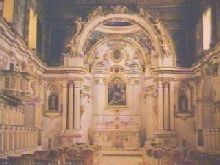 The S.Domenico Church and his internal (1500)
- The monastic group of Friars Minimi of S.Francesco di Paola (1416-1507), the biggest Saint venerate here, because He is the first Saint of Calabria, and also the protector Saint Of Calabresi and people of the Sea, for his biggest miracle of the crossing of the sea with only his cloak.
He was born in Paola, a little seaside city near Cosenza (only 30 Km from Cosenza to the sea), placed on the Tirrenic Coast in the Mediterranean Sea.
The S.Domenico Church and his internal (1500)
- The monastic group of Friars Minimi of S.Francesco di Paola (1416-1507), the biggest Saint venerate here, because He is the first Saint of Calabria, and also the protector Saint Of Calabresi and people of the Sea, for his biggest miracle of the crossing of the sea with only his cloak.
He was born in Paola, a little seaside city near Cosenza (only 30 Km from Cosenza to the sea), placed on the Tirrenic Coast in the Mediterranean Sea.
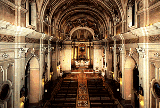 Internal of Church of S.Francesco di Paola.
Internal of Church of S.Francesco di Paola.
* * * Centrale Via Macallè 75681 * * * Domus Quattromiglia 839652 * * * Europa Roges 465064 * * * * Executive A3 Cosenza Nord 401010 * * * * Hotel Via Molinella 412165 * * * S. Agostino C/da S.Agostino 461782 * * San Carlo Piano di Maio 401050 * * * * San Francesco Commenda 461721
 Bus.
Bus. Pharmacies.
Pharmacies.
Carabinieri 112
Police 113
Hospital 6811
Ambulance 411155
Medical Guard 31831
Firemen 115

Airport(Lamezia Terme) 0968/414111
Airport(Crotone) 0962/791150
Railway Station 482333

E-mail: pippo@comune.cosenza.it Voice: +39 984 813.259 Fax: +39 984 813.355